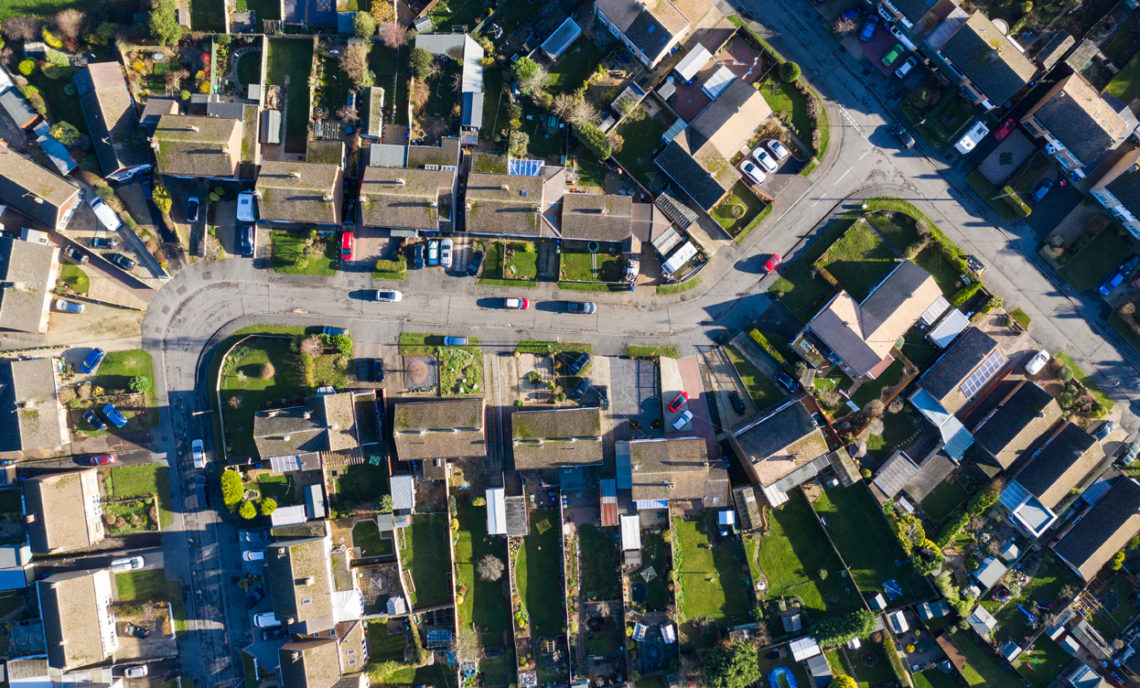
Tabled in the Victorian Parliament yesterday, the Windfall Gains Tax and State Taxation and Other Acts Further Amendment Bill 2021 (“Bill”) introduces the build-to-rent (“BTR”) land tax discount measure announced by the Treasurer in November 2020. Developers of eligible BTR projects can benefit from a 50% reduction in taxable value for land tax purposes and an exemption from the Absentee Owner Surcharge (“AOS”), for up to 30 years, where the BTR development is completed and available for occupation between 1 January 2022 and 31 December 2031.
The details below are based on the current wording of the Bill and are therefore subject to its passage through Parliament and any amendments that might be made.
What is the new land tax concession?
The Bill introduces a land tax concession that provides a 50% reduction in the taxable value of land used for an eligible BTR development, together with a full exemption from the AOS (currently 2%) (collectively, the “BTR Benefits”). The BTR benefits apply to BTR developments that satisfy the requirements outlined below for a continuous period of at least 15 years from the occupancy date of the eligible BTR development.
The BTR Benefits will be available for eligible BTR developments for up to 30 years, where an occupancy permit has been issued in respect of the dwellings between 1 January 2022 and 31 December 2031.
Who will benefit from the new land tax concession?
The BTR Benefits will be welcomed by Victorian developers, who have traditionally been faced with significant barriers to undertaking BTR developments in Victoria from a tax perspective. BTR developments have typically been viewed as a less attractive investment option in part due to the unfavourable tax (including land tax) treatment associated with holding and operating a BTR development.
We are pleased to see that the eligibility criteria for the BTR Benefits are less onerous than the eligibility criteria for the equivalent discount enacted by the New South Wales Government earlier this year. Whilst many of the eligibility criteria for the Victorian BTR Benefits mirror the criteria for the equivalent benefits in NSW, the Victorian provisions do not require that a significant proportion of the construction labour force hours involve work by certain classes of workers (e.g., apprentices, trainees, graduates, etc.) and allow for the subdivision of the BTR development. Overall, Victorian land owners and developers receiving BTR Benefits will be afforded more flexibility in how they deliver their BTR projects than their NSW counterparts.
When will the changes come into effect?
The proposed BTR measures, if enacted, will take effect from the day after Royal Assent to the legislation.
If Royal Assent is received before 31 December 2021, the measures will take effect from the 2022 land tax year. In other words, land owners will be able to apply for the BTR Benefits in respect of an eligible BTR development for the 2022 land tax year onwards.
How does the new regime work?
BTR development
A BTR development is defined as ‘one or more buildings which are constructed or substantially renovated for the purpose of providing multiple dwellings for lease under residential rental agreements.’
The definition intends to capture newly constructed or substantially renovated buildings, for the purpose of providing BTR dwellings and facilities. For example, the conversion of an office building to residential apartments. A ‘substantially renovated’ building does not include an update of an existing residential facility.
Eligible BTR development
An ‘eligible BTR development’ is a BTR development that provides at least 50 self-contained dwellings that meet all of the following requirements:
(a) Fixed on the same parcel of land
- A ‘parcel of land’ can include one title or multiple titles that are contiguous to one another or separated only by a road, railway, or other similar area across or around which movement is reasonably possible.
- Importantly, all titles must be owned by the same person (which can include a group of persons)
- Common areas provided for the use of residents of the dwellings in the eligible BTR development form part of the eligible BTR development if the common areas satisfy the requirements at (a) to (b).
(b) Owned by one owner or owned collectively
- The BTR dwellings must be owned by one owner or by multiple owners collectively.
- However, the ownership and control does not need to be static. Owners and investors can change over time, provided all dwellings in the BTR development are held collectively and there is no divided ownership of the land.
- If the BTR dwellings are held by joint owners, each owner’s interest must be the same across all the dwellings, otherwise it will be considered as divided ownership of the land.
Example
A joint ownership where 2 owners each hold a 30% interest in the whole of the land with the BTR dwellings on it, and the third owner holds a 40% interest in the whole of the same land, would be considered to be under collective ownership and control.
(c) Managed by a single management entity (unless the dwellings are used to provide affordable or social housing)
- A BTR development is managed by a ‘single management entity’ if a single entity is responsible for the provision of management services for the BTR development.
- The land owner and management entity can be different entities (e.g. the land owner may outsource the provision of the management services), provided that the management services are delivered by a single entity.
- Similarly, it appears that the operator of the BTR development (i.e. the entity that leases the dwellings to the tenants) could be different from the management entity.
- Exceptions to the single management entity requirement apply for the delivery of social or affordable housing. Dwellings used to provide affordable housing or social housing may be managed by other management entities for that purpose without restriction.
-
- ‘Affordable housing’ is defined in the Planning and
Environment Act 1987, and broadly, includes social housing (defined below) that is appropriate for the housing needs of any of the following—
- ‘Affordable housing’ is defined in the Planning and
(a) very low income households;
(b) low income households;
(c) moderate income households;
-
- ‘Social housing’ is defined in the Housing Act 1983 as public housing (i.e., non-profit housing in the public sector) and housing owned, controlled, or managed by a registered housing association or a registered housing provider declared to be a participating registered agency.
(d) Suitable for occupancy on a date that is on or after 1 January 2021 and before 1 January 2032
- A dwelling in a BTR development is deemed to be suitable for occupancy on the date that an occupancy permit is issued in respect of the dwelling. This is the ‘occupancy date.’
- The occupancy permit must be issued on or after 1 January 2021 and before 1 January 2032.
Expansion of existing eligible BTR development
- If –
- additional self-contained dwellings are constructed after the occupancy date for the existing eligible BTR development; and
- provided the new dwellings meet the eligible requirements at (a) to (e),
they will be taken to form part of the existing eligible BTR development going forward, notwithstanding that they were completed at a later date.
- The ‘occupancy date’ for the additional dwellings will be the date on which the occupancy permit for those dwellings is issued. As a result, an eligible BTR development may have more than one occupancy date.
(e) Rented or available for rent under an eligible residential rental agreement
- Each dwelling which forms part of an eligible BTR
development must be rented or made available for rent under a residential rental agreement for a fixed term of not less than 3 years.- A ‘residential rental agreement’ is defined in the Residential Tenancies Act 1997 as an agreement, whether or not in writing and whether express or implied, under which a person lets premises as a residence (but does not include a Specialist Disability Accommodation residency agreement) and includes a fixed term residential rental agreement and a periodic residential rental agreement.
- However, in recognition that tenants may prefer a shorter term, a tenant may elect to enter into a residential rental agreement of a dwelling for a term of less than 3 years. If this is the case, the requirement at (e) will still be satisfied.
- The residential rental agreement must not be subject to any restrictions except for those required to ensure public health and safety or to provide social and affordable housing.
Example
A student accommodation development would not be an eligible BTR development if the dwellings are not available to be rented by the general public but are restricted to students.
(f) The requirements at (a) to (e) must be satisfied for a continuous period of at least 15 years from the occupancy date of the eligible BTR development (“15 Year Eligibility Requirement”)
Expansion of existing eligible BTR development
- Where additional self-contained dwellings are constructed after the occupancy date for the existing eligible BTR development, those dwellings will be required to remain part of the eligible BTR development for at least 15 years from the occupancy dates for the new dwellings.
Example
An eligible BTR development with 200 dwellings is constructed in stages such that:
(a) 100 dwellings receive occupancy permits on 1 May 2022 (stage one); and
(b) 100 dwellings receive occupancy permits on 1 June 2024 (stage 2).
In this example, the eligible BTR development has 2 occupancy dates, and the 15 Year Eligibility Requirement commences for stage one on 1 May 2022 and for stage 2 on 1 June 2024.
When can an owner of an eligible BTR development receive the BTR Benefits?
Land or part of land used and occupied solely for an eligible BTR development on 31 December of the year immediately preceding the tax year will be eligible for the BTR Benefits for –
- one continuous period; and
- for a maximum period of 30 years from the date the BTR Benefits are first applied to the land.
In other words, land or part of land is not eligible for the BTR benefits if the land or part of land has previously ceased to be eligible for the BTR benefits.
If an eligible BTR development has more than one occupancy date because of the expansion of the eligible BTR development, the requirements at (1) and (2) above apply to each part of the eligible development as if they were separate eligible BTR developments.
Example
An eligible BTR development commences operation in 2022 and receives the BTR Benefits for the 2023 land tax year. In 2030, the BTR development ceases to meet the eligibility criteria for the BTR Benefits and pays BTR special land tax as it failed to satisfy the 15-year continuous qualifying period. If the BTR development then recommences operation in 2031, the BTR development will not be re-eligible for BTR Benefits as it has previously received the BTR benefits and is not a new development.
How can an owner of land apply to receive the BTR Benefits?
To receive the BTR benefits the owner of the land must apply to the Commissioner of State Revenue (“Commissioner”) and provide any information the Commissioner requests for the purpose of enabling the Commissioner to determine whether the land is eligible for the BTR Benefits.
If the Commissioner is satisfied that the owner of land or part of land is eligible for the BTR Benefits, the land owner may receive the BTR benefits in anticipation of satisfying the 15-Year Eligibility Requirement. However, should the land fail to comply with the 15-Year Eligibility Requirement, it will be subject to BTR special land tax (see below).
How are the BTR Benefits applied to reduce the land owner’s land tax bill?
Land or part of land eligible for the BTR Benefits is to be assessed for land tax as if the taxable value of the land or part of the land were reduced by 50%, together with a full exemption from the AOS (currently 2%). Where an absentee owner of land is eligible for the BTR Benefits in relation to only part of land (for example, if the BTR development also has a retail component), the part of the land not eligible for the BTR Benefits will still be subject to the AOS.
The potential land tax savings generated over a 15 year holding period as a result of the application of the BTR Benefits are significant, as demonstrated by our example further below.
What is BTR special land tax?
If a land owner receives BTR Benefits in relation to land for one or more years but is unable to fulfil the 15 Year Eligibility Requirement, the land owner will be required to pay BTR special land tax.
When is it payable?
- BTR special land tax is imposed on land or part of land in Victoria if—
- a BTR Benefit has been applied to the land or part of land in anticipation of compliance with the 15 Year Eligibility Requirement; and
- due to a change in circumstances, the 15Year Eligibility Requirement is not complied with.
- The liability for BTR special land tax arises at the time of the change in circumstances.
- BTR special land tax is imposed on the land or part of land in addition to any other land tax imposed on the land or part of the land.
What are the notification requirements for land owners?
- An owner of land must give written notice to the Commissioner within 30 days if there has been a change in circumstances that results in the land or part of the land no longer being eligible for the BTR Benefits.
- A failure to notify the Commissioner is a notification default, which is subject to penalty tax.
- Land or a part of land is no longer used and occupied solely for an eligible BTR development if any of the following occur—
(a) there are one or more self-contained dwellings on the land or part of the land that no longer satisfy requirements (a) to (e) for an ‘eligible’ BTR development (see above); or
(b) the BTR development no longer consists of at least 50 self-contained dwellings that satisfy requirements (a) to (e) for an ‘eligible’ BTR development (see above).
Who is liable to pay it?
- The owner of land at the time of the change in circumstances.
- Where there has been a change of ownership in the land, the any previous owner of land does not have a BTR special land tax liability. The current owner of the land has the full liability.
When must be it be paid?
- The due date for payment specified in a notice of assessment must not be less than 14 days after the day the notice is served on the taxpayer.
What if I want to subdivide my land?
- If the land receiving BTR Benefits is subdivided, the child lots will need to continue to satisfy the BTR eligibility requirements. This means BTR special land tax may apply on a child lot if a change in circumstances occurs in respect of the child lot.
How is it calculated?
- The amount of BTR special land tax payable by the owner of land is essentially the sum of the amounts of BTR Benefits claimed in respect of each previous land tax year, plus interest calculated by reference to the relevant 10-year bond yield plus the corporate bond spread as at 31 December in the year preceding the relevant year. The interest rate based on the current bond yield and spread would be approximately 3.5%.
- An example of how the BTR special land tax is calculated is provided below.
Example
Build Co, a foreign owned development company acquired Victorian land with a site value of $15 million for development purposes in 2015. Build Co has completed the a BTR development on the land, which comprises 100 residential apartments, a gym, swimming pool and several other common areas, all of which are situated on one parcel of land. The development was completed on 1 September 2021 and occupancy permits in relation to all 100 dwellings were issued on the same date.
Build Co has entered into a management agreement with Service Co to manage the property, including common areas until 2040. All apartments in the development are available for lease to residential tenants for a minimum period of three years and the leases are not subject to any other restrictions.
Build Co’s development is an ‘eligible BTR development’ because the building constructed by Build Co provides at least 50 self-contained dwellings that are –
- fixed on the same parcel of land and owned by one person. The common areas also form part of the eligible BTR development because they are fixed on the same parcel of land as the 50 self-contained dwellings, they are owned by the same owner and they are managed by the same management entity (i.e., Service Co).
- owned by one owner, being Build Co.
- managed by a single management entity, being Service Co, which is responsible for the provision of management services for the BTR development.
- suitable for occupancy on a date that is on or after 1 January 2021 and before 1 January 2032, as the occupancy permits in relation to the dwellings were issued on 1 September 2021.
- rented or available for rent to the general public under a residential rental agreement for a fixed term of not less than three years. The rental agreements are not subject to any restrictions.
As such, Build Co’s development should be an eligible BTR development that can qualify for the BTR Benefits from the 2022 land tax year. Build Co can apply to the Commissioner to receive the BTR Benefits in anticipation of satisfying the 15-Year Eligibility Requirement.
If the Commissioner determines that Build Co is eligible for the BTR benefits, the combined 50% reduction in taxable value, together with the exemption from the AOS will generate an annual saving of $491,250 in the 2022 land tax year.
Annual land tax payable with no BTR Benefits applied
Taxable value of land = $15m
General land tax – $27,975 + [($15m-$3m) x 2.55%] = $333,975
AOS – $15m x 2% = $300,000
Total land tax (2022 year) = $633,975
Annual land tax payable with BTR Benefits applied
Taxable value of land = $15m
Reduced taxable value of land = $15m x 50% = $7.5m
General land tax – $27,975 + [($7.5m-$3m) x 2.55%] = $142,725
AOS – full exemption
Total land tax (2022 year) = $142,725
Annual land tax savings as a result of BTR Benefits = $491,250
For simplicity, on the assumption that the taxable value of the land were to remain at $15 million for the next 15 years and the land tax rates were to remain unchanged over the same period, Build Co would save more than $7.3 million in land tax over that period if its land continued to be an eligible BTR development for the required 15 year period.
Change in circumstances
However, if as at 31 December 2030 (i.e., 2031 land tax year) Build Co’s circumstances were to change such that it no longer complies with the 15-Year Eligibility Requirement, the land would become subject to special land tax in addition to the general land tax payable in respect of the land.
Special land tax would then be applied for each year that Build Co had received the BTR Benefits – in this example, 10 years (i.e., 2022 to 2031). Build Co would be required to undertake 10 calculations (one for each year they received BTR benefits) and the sum of the 10 calculations would be the amount of BTR special land tax (including interest) payable to the Commissioner. This would also be a significant amount and may cause a cash flow issue if Build Co has not anticipated its special land tax liability.
What are the other land tax measures in the Bill?
The Bill also seeks to introduce the following key land tax amendments:
Charitable land tax exemption
Current rules:
The Commissioner must determine that:
- the land is used by a charitable institution exclusively for charitable purposes; or
- The land is owned by a charitable institution and is vacant and is declared by its owner to be held for future use for charitable purposes.
Proposed amendments:
The Commissioner must determine that:
- the land is used and occupied by a charitable institution exclusively for charitable purposes; or
- The land is owned by a charitable institution and is vacant and is declared by its owner to be held for future use and occupation by a charitable institution exclusively for charitable purposes.
- The Commissioner must be satisfied that the land will be exempt land within 2 years, or a longer period approved by the Commissioner
Land leased for sporting, recreational or cultural activities by members of the public
Current rules:
- the land is leased for outdoor sporting, outdoor recreational, outdoor cultural or similar outdoor activities and is available for use for one or more of those activities by members of the public; and
- the proceeds from the leasing are applied exclusively by the person or body for charitable purposes.
Proposed amendments:
The Commissioner must determine that the land is:
- owned by a charitable institution; and
- leased for outdoor sporting, outdoor recreational, outdoor cultural or similar outdoor activities; and
- available for use for one or more of those activities by members of the public.
It appears that the amendment to the charitable land tax exemption has been introduced as a result of the Supreme Court of Victoria’s decision in University of Melbourne v Commissioner of State Revenue [2021] VSC 156. That case considered whether land owned by the University of Melbourne was used exclusively for charitable purposes. Osborne J found that it was not necessary for the University to ‘occupy’ land in order to ‘use’ it. In other words, active use of the land was not required to benefit from the charitable land tax exemption. The introduction of an occupation requirement to the exemption will mean that charities will need to actively use and occupy land in order to qualify for the charitable exemption, going forward.
What are the next steps?
Please contact your Pitcher Partners representative for further information.





